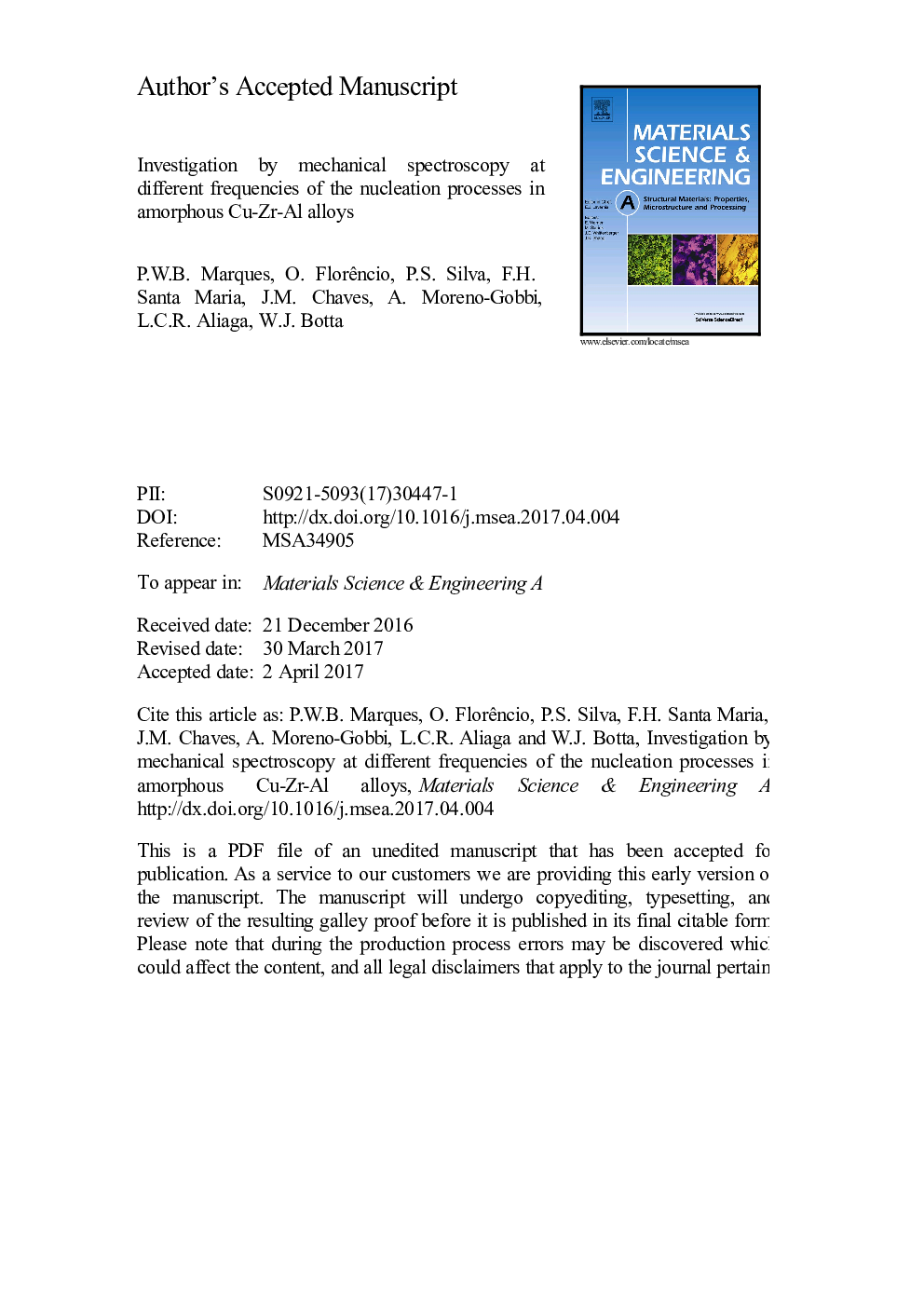| Article ID | Journal | Published Year | Pages | File Type |
|---|---|---|---|---|
| 5456062 | Materials Science and Engineering: A | 2017 | 27 Pages |
Abstract
The anelastic spectra of Cu39.5Zr51Al9.5, Cu54Zr40Al6 and Cu47.75Zr47.75Al4.5 bulk metallic glasses were obtained by Mechanical Spectroscopy Technique at different frequencies. Studies below room temperature show two principal mechanisms: one broad peak, similar to β relaxation, and another sharp peak, similar to α relaxation. This observation suggests that the interaction between amorphous structure and mechanical waves demonstrates that βⲠrelaxation can be decomposed in two principal peaks, one due to the movement of flow units and another owing to the growth of molecular-like structures. The behaviour of hybridization among Al-Cu atoms tends to decrease the free space in the amorphous matrix, increasing internal friction. The mechanical excitation and interaction among nanostructures such as cluster type, supercluster and molecular-like structure, can lead to growth of microalloy which may give rise to the medium-range order structure as well as increasing the small nanocrystalline region scattered into the glassy structure. In addition, the effect of mechanical vibration and cryogenic temperature acting on the amorphous structure can promote interaction among nanostructures resulting in a barrier that tends to block the propagation of shear bands in the metallic glasses.
Related Topics
Physical Sciences and Engineering
Materials Science
Materials Science (General)
Authors
P.W.B. Marques, O. Florêncio, P.S. Jr, F.H. Santa Maria, J.M. Chaves, A. Moreno-Gobbi, L.C.R. Aliaga, W.J. Botta,
